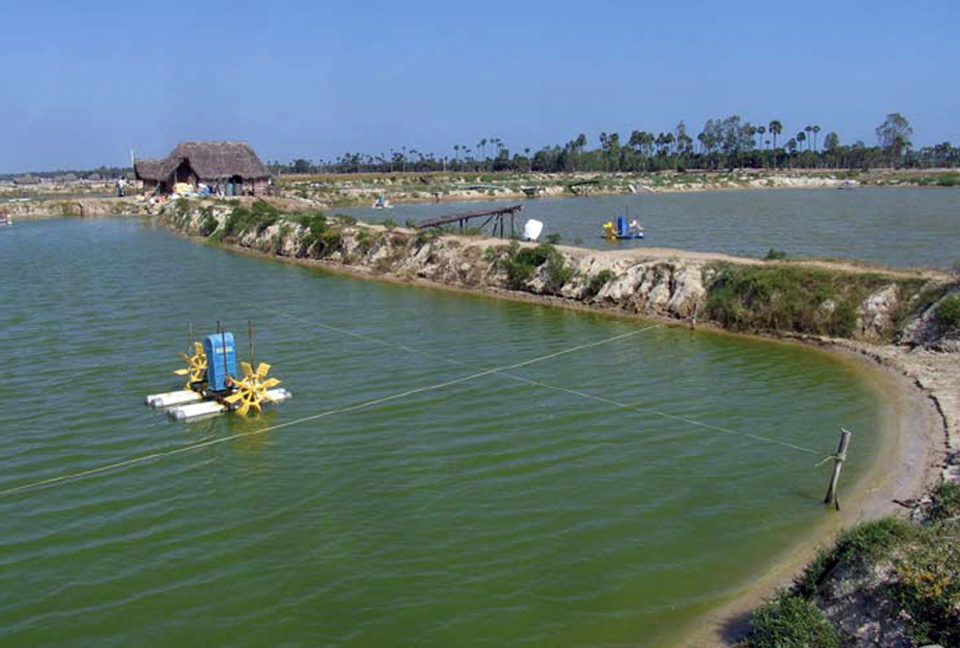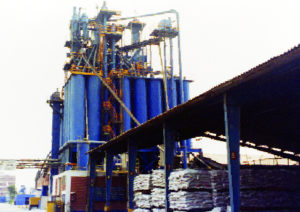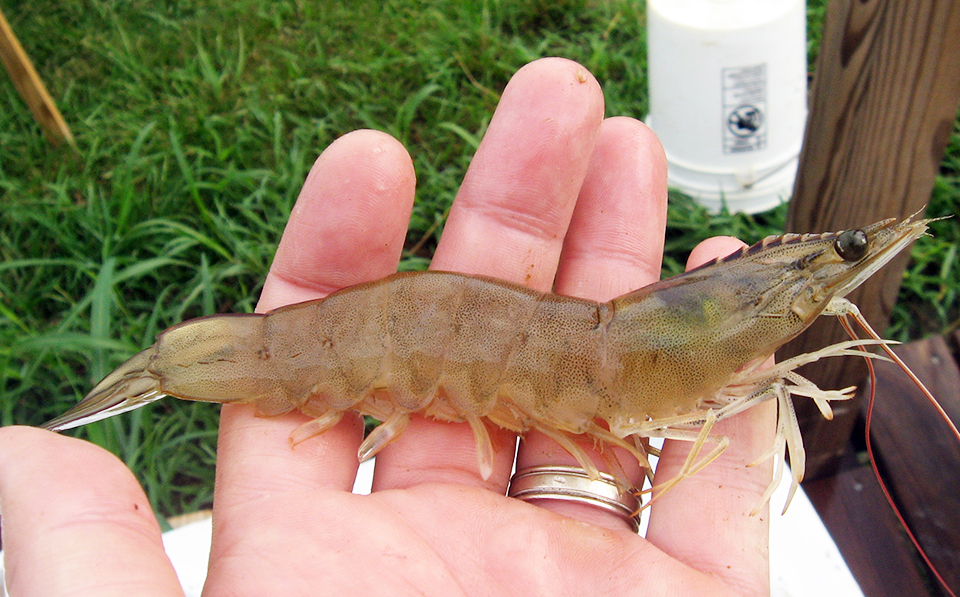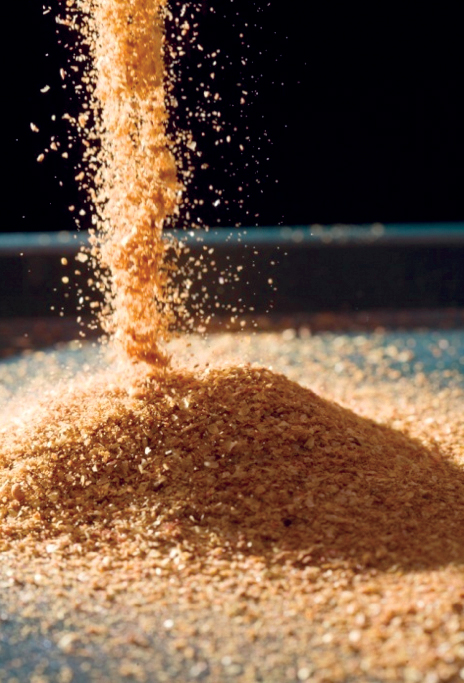Fishmeal a major issue for producers

At the January 11-13 Indaqua 2007 conference held in Chennai, India, the mood of many farmers for the forthcoming year was bullish. Many expressed optimism that 2007 would be a bumper year for Indian shrimp production and shrimp prices, as well.
Early stocking
One important factor governing the success of the first shrimp crop is how quickly temperatures stabilize above 28 degrees-C. Many Indian farmers stock early in an attempt to gain an edge by harvesting before the majority of other farmers, when prices are likely to be higher.
However, this exposes them to a higher risk of losses to White Spot Syndrome Virus (WSSV), since the higher reported prevalence of WSSV in broodstock in December and January increases the chance of stocking infected postlarvae. At the same time, any drop in temperature increases the risk of heavy losses from WSSV. It is not uncommon, therefore, for farmers who stock early to lose their crops to WSSV in the first 30-50 days after stocking.
The decision to stock early is based on sound business reasoning when prices are likely to be higher for an early harvest. Against that must be balanced the higher risk – and cost – of failure. Early crop failure is less catastrophic than problems that come later, as comparatively little money is invested at that point. However, the lost production opportunity and time wasted due to cleaning up the failed crop and starting over must be considered.
Introduction of L. vannamei

One of the other hot topics in India, as elsewhere, is the question of permitting the introduction of Litopenaeus vannamei beyond the current pilot scale, where a small number of farms have been allowed to stock specific pathogen-free white shrimp. Indian farmers are split over this issue, as has been the case in other countries.
Dr. Simon Funge-Smith of the United Nations Food and Agriculture Organization Regional Office for the Pacific and Asia outlined some of the pros and cons of L. vannamei during his comprehensive presentation at the Indaqua meeting. Referencing the latest FAO production figures from 2004, Funge-Smith said that at that time, the economics of using low stocking densities to produce large P. monodon looked good in India. Despite having half the volume of Thailand’s L. vannamei production, India exported shrimp with a value almost the same as Thailand’s.
Since then, it has been claimed that slow growth, Loose Shell Syndrome, and poorer overall production have changed the economic picture to the detriment of P. monodon farmers. However, should they switch to L. vannamei, it is not clear how well Indian farms would compete with the low cost of production in Indonesia and the export strength of Thailand’s processors.
There were mixed feelings among the conference attendees. Some processors and larger farms supported the further introduction of L. vannamei to increase production volumes and use up the available processing capacity. Stocking densities were also an issue, since India currently has legislation that limits stocking densities to 12 animals per square meter.
This would seriously inhibit farmers’ ability to benefit from L. vannamei production, since its economics favor higher stocking densities and yields. In Thailand and Indonesia, for example, yields of 10 to 20 metric tons MT per hectare are not uncommon. Indian farmers also had concerns over the capital costs and capability to implement the intensive production systems that are doing so well in other countries. This further emphasizes the need for feed companies to ensure good raw material purchasing and quality control measures.
Importation, P. monodon
Funge-Smith argued for a comprehensive risk analysis to identify what steps the Indian government would need to ensure the safe introduction and importation of live shrimp into the country. Based on experience in other countries, exotic pathogens such as Taura Syndrome Virus and Infectious Myonecrosis Virus have been introduced through careless or uncontrolled transfers of live shrimp and poor biosecurity procedures. It is also known that many of the shrimp traded within the region as specific pathogen-free are, in fact, contaminated with one or more of the pathogens on the current U.S. Marine Shrimp Farming Program list.
It is interesting that there appears to be a resurgence of interest in P. monodon in Thailand. At a recent shrimp farmers’ meeting in Chantaburi, in the eastern part of the country, several industry leaders suggested that the percentage of P. monodon production could rise to 30 percent in 2007. It remains to be seen how well that prediction will hold, but several producers reported good growth rates and profits from the shrimp in the second half of 2006.
Fishmeal issues
The high price of fishmeal continues to be a major issue among feed producers in Asia. Fishmeal prices, which rose from around U.S. $600/MT to as high as $1,300/MT last year, had a significant impact on feed costs and profitability. Although prices eased somewhat at the year end, it is widely believed that this was only temporary, and prices will continue their upward trend once demand picks up for the new farming season, especially in China.
The situation is exacerbated by the success of Chile’s salmon-farming industry, which produces around 400,000 MT annually and is challenging Norway as the top global producer. An increasing proportion of Chile’s fishmeal supply is being consumed internally, reducing the globally traded volume. Add to that China’s seemingly insatiable demand for fishmeal, and it is clear that the supply-demand situation will tend toward higher prices.
Fishmeal quality
Apart from the obvious need to focus on the efficient use of fishmeal, feed millers are also contending with issues related to fishmeal quality, especially with sources traded within Asia. In recent months, some low-protein fishmeal has been passed off as high-protein meal.
Protein content is usually measured by analyzing the nitrogen content of the fishmeal. Since protein is 16 percent nitrogen, the crude protein level is easily calculated from the nitrogen content. However, the nitrogen level in the meal can be manipulated by the addition of nonprotein nitrogen sources such as urea, which increase the apparent crude protein level.
This is relatively easy to detect, so most feed plants have taken the appropriate steps to analyze samples of fishmeal. In some cases, suppliers have claimed the fishmeal content is affected by the inclusion of meal from fish species with high urea content in the flesh. This is the case with cartilaginous fish such as sharks, skates, and rays, but such species are rarely found in large groups that form a significant proportion of any fishmeal sample.
Detection of adulteration is more difficult when fishmeals are mixed with materials that have high crude protein values but low digestibility. Such materials do not significantly contribute to the nutritional value of the feed.
Recently, some fishmeal samples were found to have been mixed with leather meal or tannery byproduct meal. Leather has 70 to 75 percent crude protein, but since it is composed mainly of collagen, it has a poor amino acid profile and very low digestibility. Detecting leather meal adulteration is complicated and sometimes requires analysis of the essential amino acid profiles of samples to ensure that they match that of good-quality fishmeal.
(Editor’s Note: This article was originally published in the March/April 2007 print edition of the Global Aquaculture Advocate.)
Now that you've reached the end of the article ...
… please consider supporting GSA’s mission to advance responsible seafood practices through education, advocacy and third-party assurances. The Advocate aims to document the evolution of responsible seafood practices and share the expansive knowledge of our vast network of contributors.
By becoming a Global Seafood Alliance member, you’re ensuring that all of the pre-competitive work we do through member benefits, resources and events can continue. Individual membership costs just $50 a year.
Not a GSA member? Join us.
Author
-
Daniel Fegan
Alltech Biotechnology Corp.
209/1 CMIC Tower B, 17th Floor
Sukhumvit 21 Road
Klongtoey, Bangkok 10110
Thailand[109,111,99,46,104,99,101,116,108,108,97,64,110,97,103,101,102,100]
Tagged With
Related Posts

Aquafeeds
Alternatives to fishmeal perform well in low-salinity shrimp farm trial
In a white shrimp farm trial in a low-salinity environment, alternatives to fishmeal did not negatively impact the growth, survival or FCR of the shrimp.

Aquafeeds
A look at corn distillers dried grains with solubles
Corn distillers dried grains with solubles are an economical source of energy, protein and digestible phosphorus to reduce feed costs and fishmeal usage.

Aquafeeds
A look at protease enzymes in crustacean nutrition
Food digestion involves digestive enzymes to break down polymeric macromolecules and facilitate nutrient absorption. Enzyme supplementation in aquafeeds is a major alternative to improve feed quality and nutrient digestibility, gut health, compensate digestive enzymes when needed, and may also improve immune responses.

Aquafeeds
A new nutrient for aquaculture, from microbes that consume carbon waste
Biotechnology firm NovoNutrients aims to produce a line of nutraceutical aquafeed additives as well as a bulk feed ingredient that can supplement fishmeal. Its process includes feeding carbon dioxide from industrial gas to a “microbial consortium” starring hydrogen-oxidizing bacteria.


